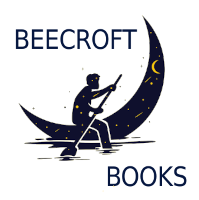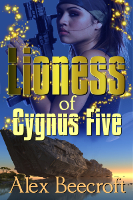How to include more female characters in your m/m romance.
It’s the nature of the writing beast that no matter what kind of writing you specialise in, someone will tell you that you’re doing it wrong. In the m/m genre they will also find numerous ways of telling you that you are doing it immorally. Either you’re being homophobic by exploiting gay men’s lives for the sake of straight women, or you’re being misogynistic by writing women out of your fictional worlds entirely. Or both at once.
Now I’m not sure how a genre can be simultaneously wrong by catering to women’s needs while also being wrong by being bad for women, but as is so often the way, there may be some truth in both things. So what can be done to minimise the problem? Well, we do what we can to make sure gay people enjoy our writing as much as straight women, and we make sure we have more interesting female characters, so women are well represented in our fiction.
Clearly the main problem in getting female characters into your m/m fiction comes from the fact that both of your main characters are men. Your viewpoints will be overwhelmingly male because your romantic couple are both male. And there’s nothing you can do about that without completely changing the genre to m/f, which rather defeats the object.
So if the nature of m/m means that both your main characters are male, what can you do to increase the presence of interesting female characters?
We could start off with the evil ex. Does main character A have a wife or girlfriend? She doesn’t have to be an evil bitch – after all, it’s no more fun for a woman to be married to a gay man than it is for a gay man to be married to a woman. So any breakup is likely to be both their responsibility. Maybe they separated amicably and are now working at being friends while raising their children together (or apart)? Or maybe she is an antagonist, but for perfectly good reasons, which can be addressed during the plot without blaming her for being some kind of monster.
Maybe the main characters both have evil exes, and they are genuinely moustache-twirling (what’s the female equivalent? Dog-fur-wearing?) villainess exes with plans to rule the world. Everyone loves a magnificent villain. As long as you have a woman or two on the side of the angels too, a genuinely, gloatingly, over the top villainess can be great fun.

We could also mention mothers. It’s a fair guarantee that every character will have a mother, and she doesn’t need to be dead or out of the picture. She could just as easily be funny and capable, or doing a glamourous or interesting job. She could be interfering, but that doesn’t have to be a bad thing.
Many people have sisters, and your main characters may be among them. Perhaps they have gone into business with their sister, or their sister has a problem they can help with, or their sister has a brilliant idea about what they can do to solve whatever their big plot problem is.
Maybe one or both of your main characters have female bosses? Maybe their bosses are rivals, and that’s how they get together – snooping around each others’ businesses in a series of acts of industrial espionage, and they can’t get together without talking the bosses into a merger instead of a hostile takeover. As long as neither boss is represented as an evil bitch, this could be a great chance to develop two strong female characters with a large degree of power and influence on the plot, who are still neither of them involved in the main relationship.
Along the ‘bosses’ line, your characters might also have female servants, whose below-stairs goings on affect their plotline. No reason why these shouldn’t be fully rounded characters too.
Your characters may work in a team and have female team-mates, whether this is one of a group of paranormal werewolves or werewolf slayers, or floor layers or architects or whatever.
If we’re talking a fantasy setting, ask yourself if your king really needs to be a king? Could she perhaps be a queen instead? If your lead characters are always having to deal with the queen and her (ninja magician) handmaidens, it will make it a great deal harder to end up with a book in which it looks as if you’ve killed off anyone in possession of a cunt.
If you find that, without realising it, you have written a novel in which there are no female characters at all, why not go the Ellen Ripley route, pick one or two of your most important support characters and make them women instead? Generally this makes no real difference to their characteristics or role in the story, and can be easily done. It may even bring some interesting freshness to your novel when the hard drinking, fist fighting, womanising best friend of the hero is a woman herself.

When I finished my first draft of Foxglove Copse, for example, I thought “this is a bit sparse on female characters! What can I do?” So I changed Jory’s tough farmer uncle John who lives out of town with his ‘close friend’ Phil to a tough farmer auntie Jillian and her ‘close friend’ Phillis. Which was a win all around.
Obviously, all of this is slightly more difficult when you are writing in an all male environment, such as in a historical – aboard a warship, inside a gentleman’s club etc. But usually even in those situations there were women invisibly doing their stuff, whom you can choose to make visible. Servants at the club, wives travelling alongside their menfolk in the warship, a doctor’s daughter serving as loblolly boy rather than being left destitute at home. Look closer at almost any situation and there will be women there, any one of whom might get involved with the plot. And yes, perhaps all she can do is be the washerwoman who scorched the MC’s breeches because he was rude to her, but even that shows there are women in this universe who have their own personalities and are not to be trifled with.
Even the small things can make a difference; the barmaid who offers the hero directions to the castle and grins behind her hand as he goes, the landlady who gets the bloodstains out of the cuffs with a suspicious look, the interior decorator who gets mistaken for a stalker when she tries to break in to replace that lamp…
In short, just because your main characters are both men doesn’t mean you can’t fill your world with interesting women. If you put effort into making your men believable, complex and non stereotypical so as to avoid the danger of offending your gay readers, why not also put effort into including believable, complex, non stereotypical female characters too, so as to avoid the danger of offending your female readers? You might even find you start liking them yourself.
~


Great post, Alex, with a lot of wonderful suggestions. I haven’t written a modern day m/m, but in my Third Crusade novel, I was able to use Richard I’s wife and sister to enhance the story. In the sequel, my main character has returned home from the crusades and has a sister who initially does not know he is gay. She encourages him to bow to their father’s wishes that he marry. Without Henry’s consent, dad makes a deal so I was able to weave in a second female, Henry’s betrothed. 12th century, arranged marriages, and toss in a little Eleanor of Aquitaine – I had a blast writing the female characters.
That sounds like a lot of fun 🙂 And yes, it really annoys me when an author does an arranged marriage story and makes the wife and her friends uniformly shallow and awful. It’s no fun for the wife to be going through this arranged marriage either, and surely it’s better if she can be actively enlisted to fix things rather than just be an obstacle.